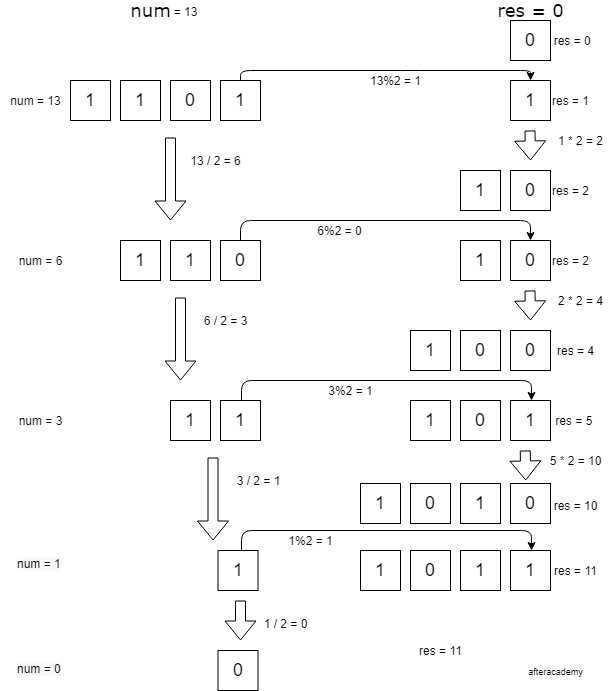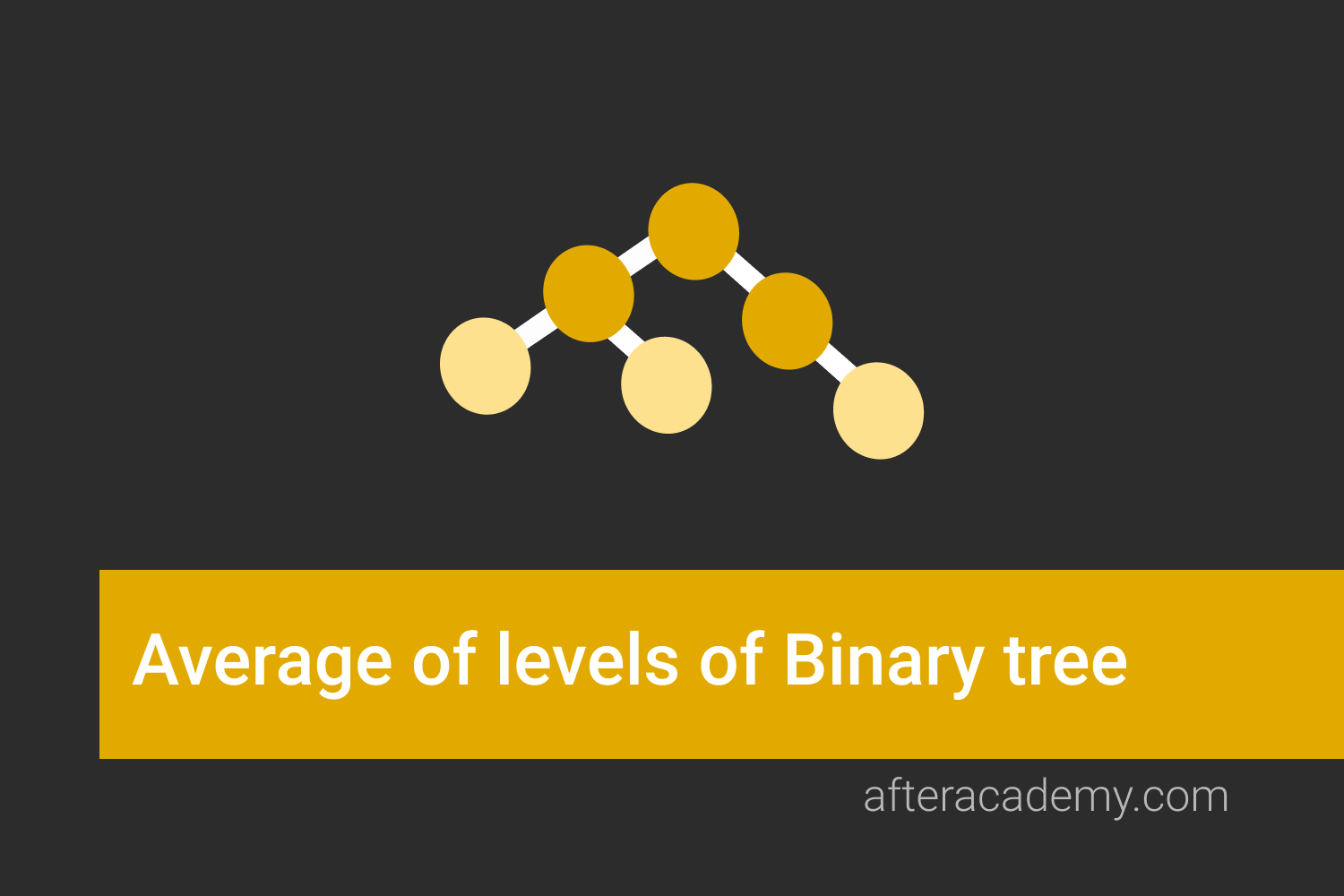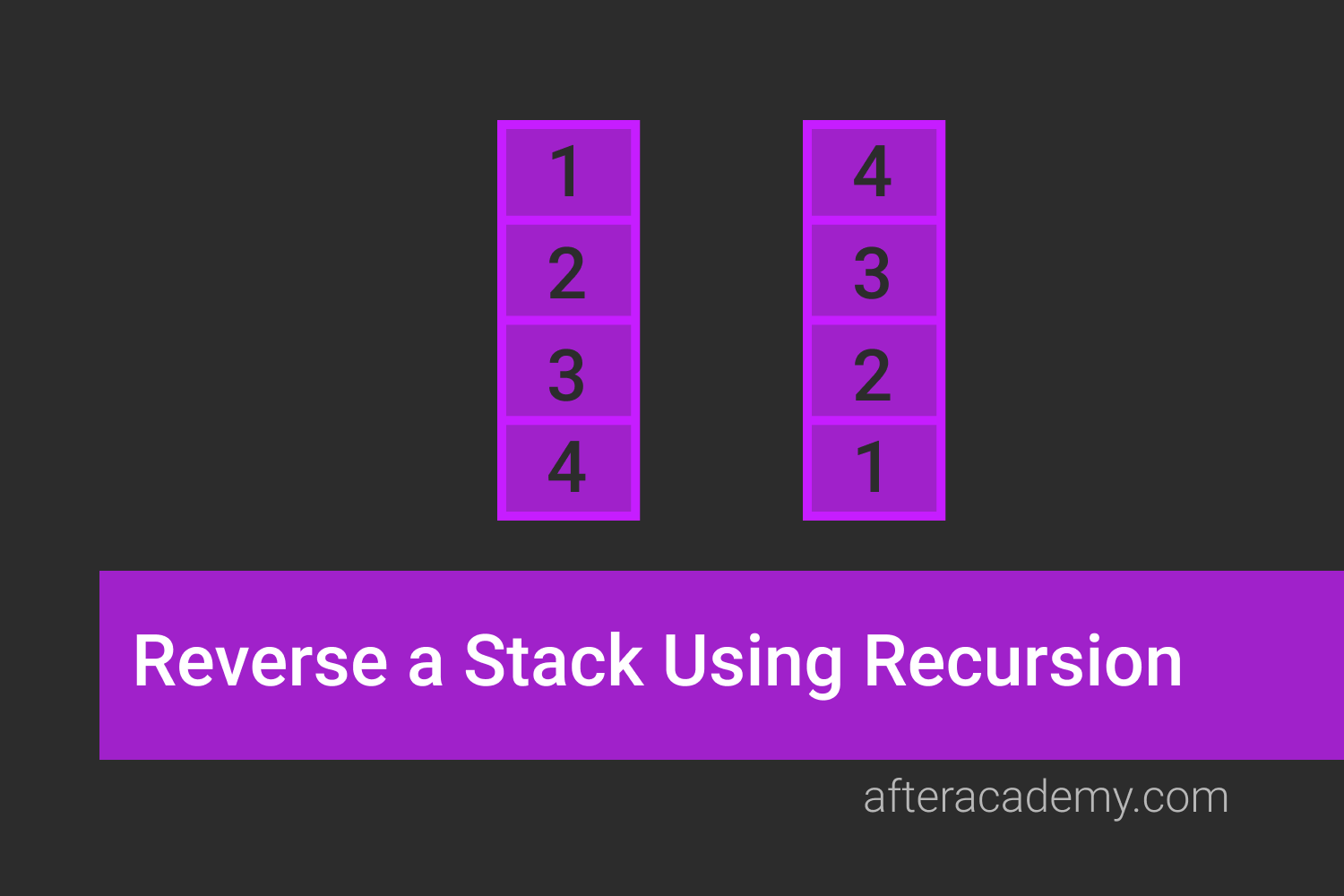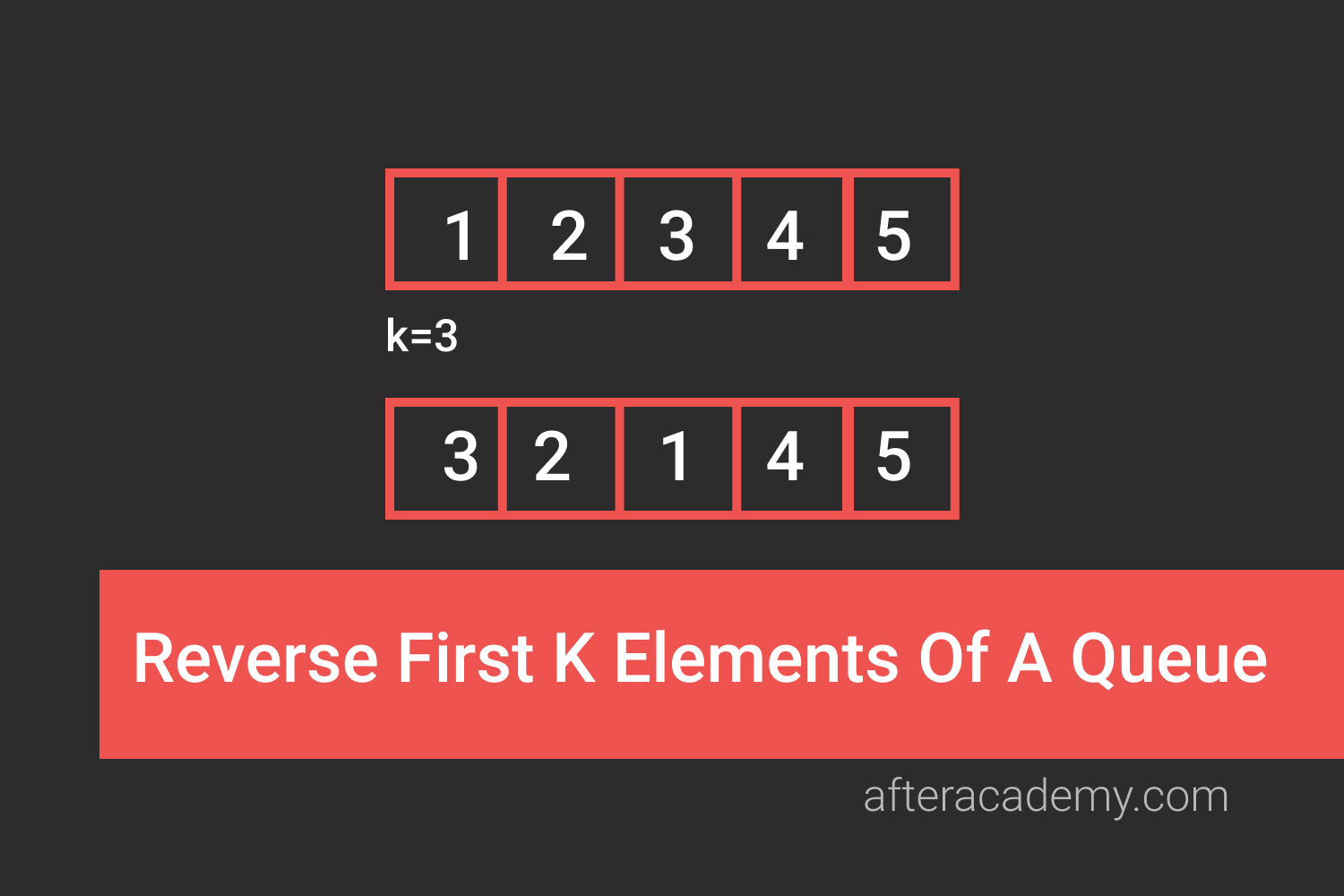Reverse Bits

Asked In: Amazon
Difficulty: Easy
Understanding The Problem
Problem Description
Given a non-negative integer
num
,
write a program to return the number obtained after reversing the bits of
num
.
Problem Note:
- The actual binary representation of the number is being considered for reversing the bits, no leading 0’s are being considered.
Example 1
Input: 13
Output: 11
Explanation: Binary representation of 13 is 1101. After reversing the bits we get 1011 which is equal to 11.Example 2
Input: 6
Output: 3
Explanation: Binary representation of 6 is 110.After reversing the bits we get 011 which is equal to 3.Solution
Bit manipulation is an important concept and thus it explains how a number is stored in memory in the form of bits and how manipulating the bits will affect the value.
This problem requires the concept of bit manipulation, as the problem requires us to reverse the bits of a number.
Like in example 1, The binary of 13 is
1101
. if we reverse
1011
then we will get
1101
which is the binary of 11.
So, all we have to do is to convert the decimal number(base 10) into binary(base 2) and then reverse the binary number and then convert it into decimal. But knowing the fact that the computers stores any numerical value in a binary form inside the memory, so we can use the concept and perform bit manipulation.
Look at the below example:

You will notice that each time we multiply
res
by 2, we basically shift the bits of
res
by one towards left. Similarly, each time we divide
num
by 2, we basically shift the bits of num by one towards the right. We can generalize the process of reversing the bits as shown above.
You may try the problem here.
Solution steps
To reverse the bits, we will perform the following operations
-
Create a variable
resand initialize it with0 -
If
num > 0
-
Multiply
reswith 2 - If num is odd then add 1 to res.
-
Divide
numby 2.
3. Repeat step 2, until
num > 0
.
4. Return
res.
Pseudo Code
int reverseBits(int num)
{
int rev = 0
// traversing bits of 'num' from the right
while (num > 0)
{
// bitwise left shift
// 'res' by 1
res <<= 1 // multiply res by 2
// if current bit is '1' or num is odd
if (num & 1 == 1)
res ^= 1 // Convert 0 to 1
// bitwise right shift
// 'num' by 1
num >>= 1 // divide num by 2
}
// required number
return res
}Complexity Analysis
Time Complexity: O(n), where n is the number of bits in num.
Space Complexity: O(1)
Critical Ideas To Think
- How is the time complexity O(no. of bits)?
-
Instead of multiplying
resby2,we didres<<=1, are these two same? -
Instead of dividing
numby2we didnum>>=1, are these two same? -
How did we check if
numis even or odd? -
Besides doing the bit manipulation in another variable, can we create an integer array that would have stored the binary of
num, and then we would have reversed the array and we could have used the values of the array to create a decimal integer? Then will this procedure would have worked? If yes, then will the complexity would be the same as of the above approach?
Suggested Problems to Solve
- Invert actual bits of a number
- Set all odd bits of a number
- Check if the binary representation of a number is a palindrome
- Change all even bits to 0.
- Rotate bits of a number
If you have any more approaches or you find an error/bug in the above solutions, please comment down below.
Happy Coding!
Enjoy Algorithms!





